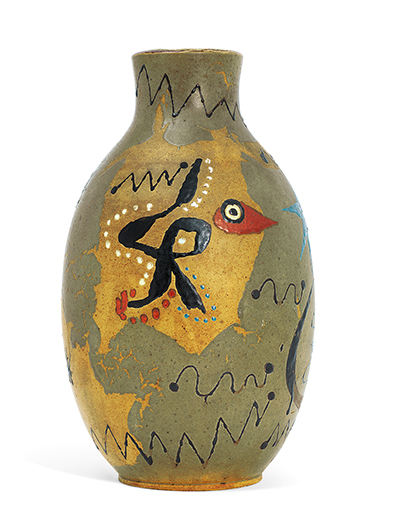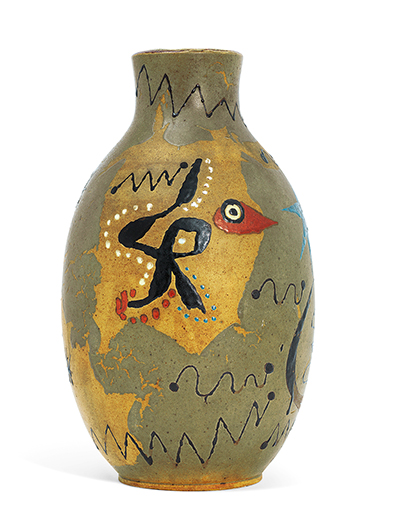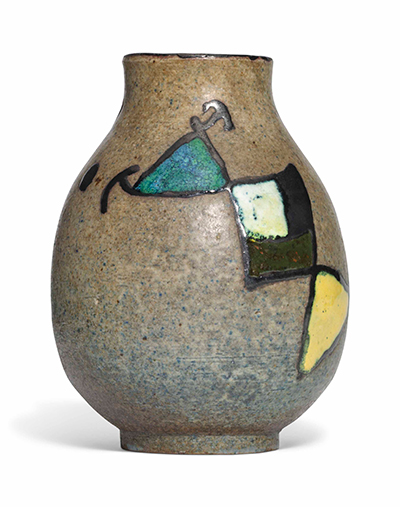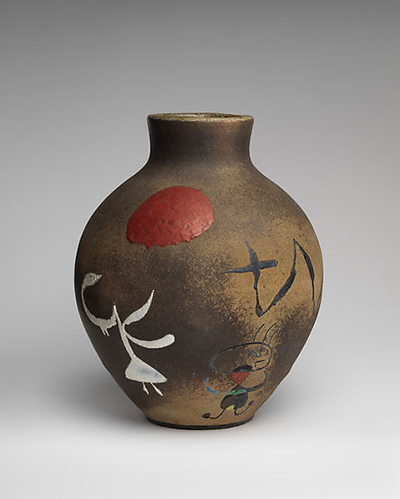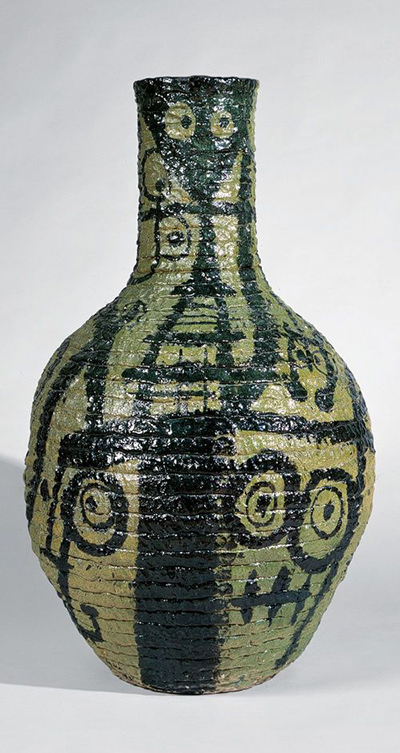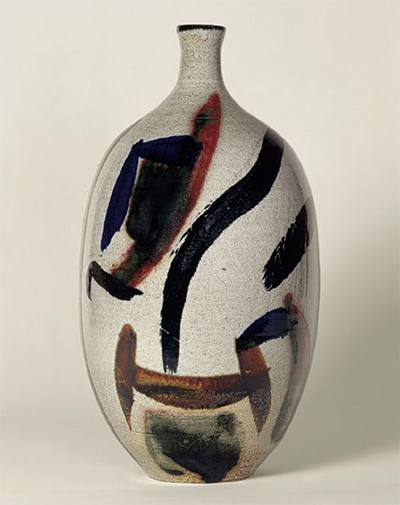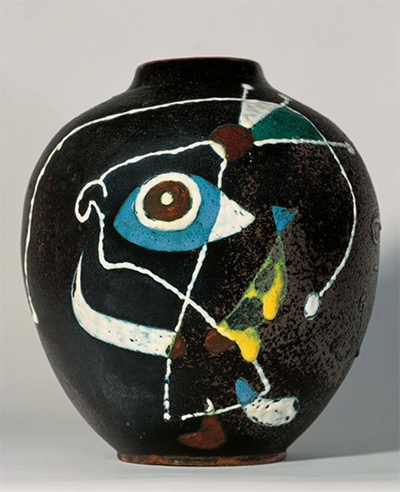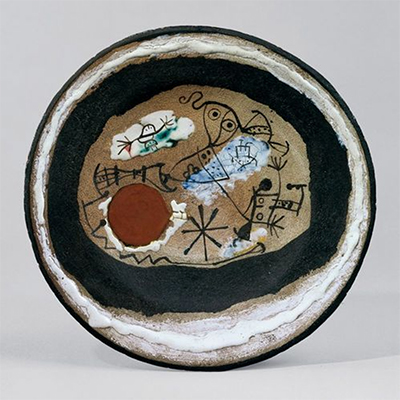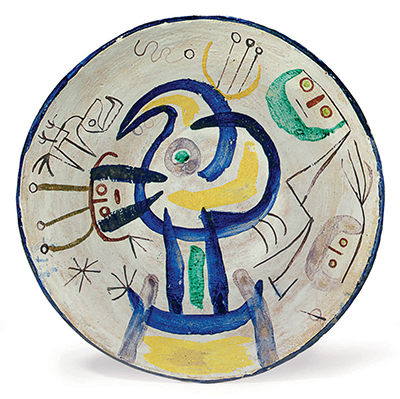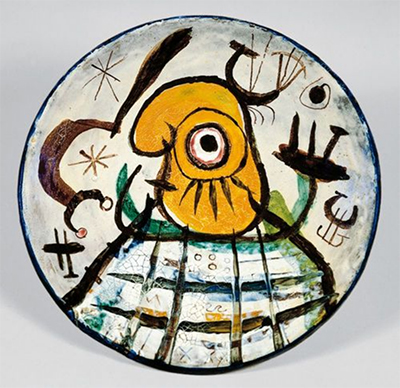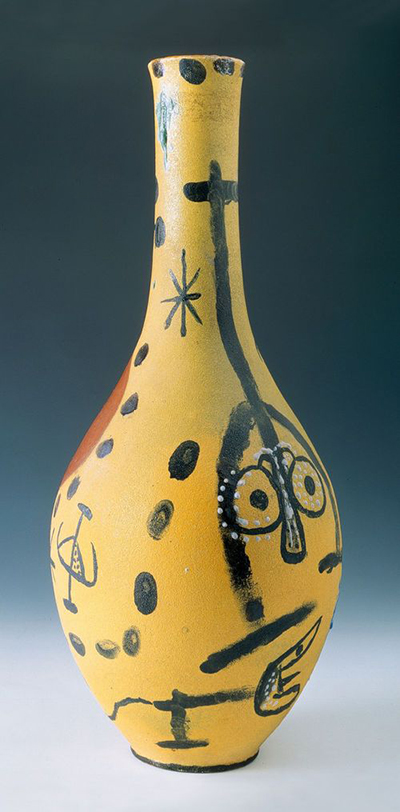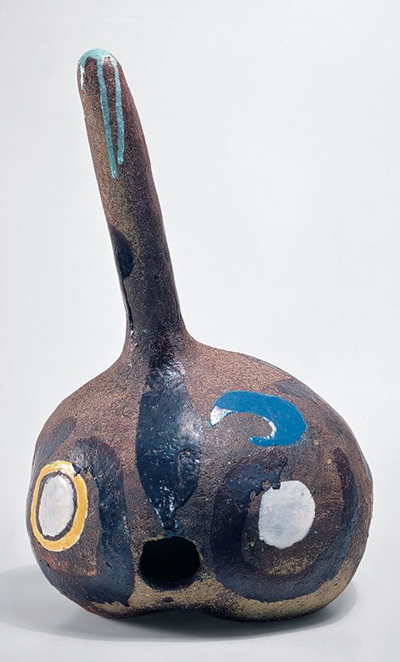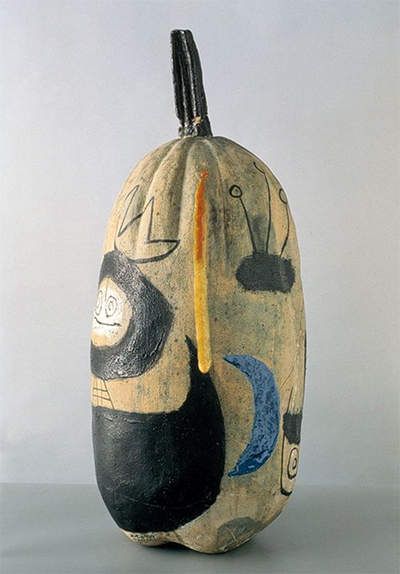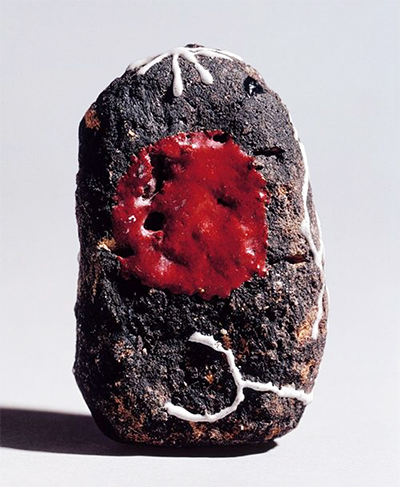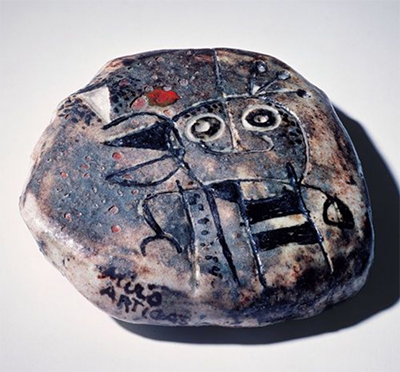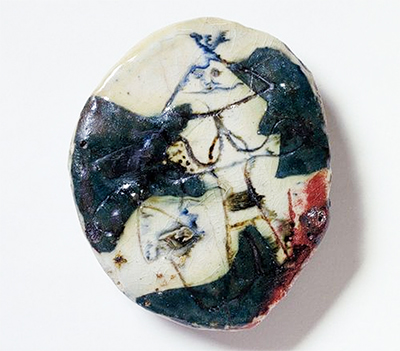The artist Joan Miro produced hundreds of ceramic artworks during his career, including whole series of plates, vases, pebbles and other objects. Each one was truly unique, typical of an artist who despised mass production.
There have been several attempts in recent years to bring all of his ceramics together into a documented list and the most recent catalogue raisonne lists a total of 441 ceramic pieces from his career. He received help from a number of individuals in his workshop in order to put these together but was always most concerned with the design of them, with technical production sometimes being left to others. He felt a great connection to his work in this medium and saw ceramics as a form of artistic magic, where clay, flame, ash and smoke are combined to produce extraordinary objects. Additionally, they would then be painted to add his own unique visual language that the artist had already developed in his paintings, sculptures and drawings.
Josep Llorens Artigas was to become the single most important artist with whom Miro collaborated during his period of ceramic design. Artigas would build a kiln in May 1945 for Miro's studio and would also help out with firing some of the artist's work. Previously they had used an alternative kiln owned by Mr Reguant which was also in the city of Barcelona. Miro and Artigas worked together exclusively over the period of 1944 to 1946 and it was to prove a particularly productive and successful time in their careers. From the year 1953 up to around 1970 the two would continue to work together, only in an alternative studio in Gallifa, which lies around 20 miles north of Barcelona. They were also joined by Artigas' son, Joan Gardy. Miro was now paying more attention to the medium of ceramics as well as sculpture and for a period painting was to be less of a concern for him.
During the 1970s the inclusion of Artigas' son within his father's was to prove a great decision due to the poor health of Josep Llorens. His serious illness would greatily disrupt his production work with Miro and so his son would take on more and more of these duties. Eventually he passed away in 1980 but by then Joan Gardy Artigas was entirely familiar with the working practices and wims of Joan. He was also very technically experienced by this point, too, and more than capable of taking over his father's work. That said, having spent so much time in collaboration over a number of decades, Joan Miro would certainly have been deeply saddened by this loss, even though it had been due for several years. By the 1980s Miro would look beyond his local area for new ideas around ceramic design and production, linking up with German ceramist, Hans Spinner. They worked together at Aime Maeght's house in Saint-Paul-de-Vence.
Many of the vases produced by the early collaboration of Miro and Artigas would be dated twice, firstly for the latter's initial firing and then secondly when Miro chose items to paint with enamels. Both stages received separate signatures and dates on the bottom of each piece. There were sometimes several years between the two stages, hence wide gaps between the two dates. Both artists signed with their surname alongside the date of their respective contributions. The inconsistent nature of the firing process meant that they would discard many different creations at an early stage and Miro would also peruse a large number of vases within Artigas' studio before selecting which ones to work with. He had a specific idea of what he was looking for and would quickly be able to select those most suitable for his work.
The Ceramic Techniques of Joan Miro, Josep Llorens Artigas and Joan Gardy Artigas
They would use several different types of kilns during their collaborations, including charcoal and wooden versions. Each gave slightly different results. They would sometimes avoid the use of glazes in order to achieve a rougher, more natural finish to the exterior. They would occasionally move studios or make use of other kilns and this added to the variety of their work. There were clearly only a few suitable locations available in and around Barcelona but they made use of whatever was available. Large numbers of pots and vases would be produced and then stored around the studios, before later being picked from and worked with artistically. Artigas, the elder, and Miro felt it important that their two roles were seen as an organic collaboration and not two separate stages, creating a single artwork rather than a piece of pottery that was then decorated by painting.
During the 1940s it would be Artigas Sr. that would shape the original vases before leaving it to dry for up to one month. They would then be fired at 1280C for up to two days, depending on the size and style of the work. He would also produce various different glazes and experiment with those to see which Miro liked most, once the piece was complete. Some of these glazes he would use exclusively with Miro on their collaborations together. These glazes tended to be richer and brighter than the others he used in his career. The painter would then complete his work on his favoured vases, before Artigas would fire them for a second time, though at a slightly lower temperature of 850-1000C. Besides the vases, which dominated most of this period in the 1940s, they also created plaques, figures and heads too, using a fairly similar process to that used to produce their vases.
Miro loved the unpredictable nature of this medium, and would actually destroy some of his own ceramic creations where he believed their dimensions to be too correct and uniform in dimension. He craved inconsistency which he felt better represented a natural look. Their figures and heads were worked exclusively by Miro who would shape this work himself before firing, painting, and then re-firing as was done with their vases. These were his most imaginative of creations, avoiding any standard formula as you would find with more regular types of pottery. There would then be a small break in their work together up until about 1953 after the Artigas family moved away from Barcelona and Miro concentrated on other projects.
The Artigas family moved to Gallifa in 1951 and two years later they would again link up with Miro for a successful period of work which lasted until 1956. Their home was called El Raco and they installed three different wooden kilns, having chosen a new property which gave them more room to cater for all the requirements of their artistic work. They even named the kilns after three significant names from ceramics of the past. By this point the family was really able to produce whichever type of work they desired and were completely free of restrictions. They continued to fire their creations for up to two days, consistently feeding in pinewood in order to keep the right temperature throughout the process.
They also by now fully understood this process in detail, such as how to fill the kiln effectively, how to consider the impact of the position and size of the flames as well as even the age of the pinetree and how that impacts the colour and impact of the resultant ash. They were truly masters of their craft by this point, much to the benefit of Miro who rejoined them in 1953. Experience told them that it would always be wise to bring the fired ceramics back to room temperature as slowly as possible, and this was achieved by covering the kiln's chimney for around two more days so that the drop in temperature would be far more gradual. This limited the chances of ceramics cracking when being removed from the kiln.



